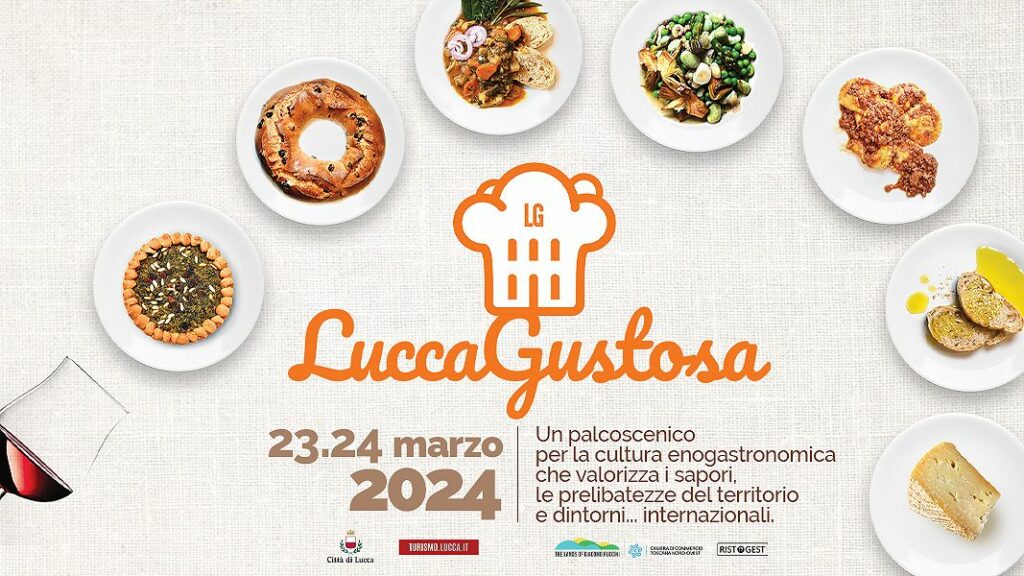in the frame of Lucca Gustosa a joint initiative of Iter Vitis and Destination Napoleon
Destination Napoleon, the cultural itinerary of the Council of Europe founded by Charles Bonaparte in 2004, of which the Municipality of Lucca is a member and vice-president for Italy, along with Iter Vitis, the vine route in Europe, certified in 2009 by the Council of Europe, will present at Lucca Gustosa the wines from territories part of both itineraries.
From Portugal to France to the Balkans, passing through Italy, it will be possible to experience, through wine tasting, the variety and richness of our continent, recalling the connections between Napoleon and wine production, and the importance of viticulture and winemaking processes in today’s European cultural identity.
Two tasting sessions for 20 people each are scheduled, on Saturday, March 23rd at 5:30 PM and Sunday, March 24th at 11:00 AM.
The tastings will be preceded by a brief presentation of Destination Napoleon and Iter Vitis in the presence of institutional representatives of the Municipality of Lucca and experts in Napoleonic history.
Destination Napoleon, the cultural itinerary of the Council of Europe founded by Charles Bonaparte in 2004, of which the Municipality of Lucca is a member and vice-president for Italy, along with Iter Vitis, the vineyard route in Europe, will present at Lucca Gustosa the wines from territories part of both itineraries.
From Portugal to France to the Balkans, passing through Italy, it will be possible to experience, through wine tasting, the variety and richness of our continent, recalling the connections between Napoleon and wine production, and the importance of viticulture and winemaking processes in today’s European cultural identity.
Two tasting sessions for 20 people each are scheduled, on Saturday, March 23rd at 5:30 PM and Sunday, March 24th at 11:00 AM.
The tastings will be preceded by a brief presentation of Destination Napoleon and Iter Vitis in the presence of institutional representatives of the Municipality of Lucca and experts in Napoleonic history.
Napoleon’s saga unfolds through his travels, tracing a path that embodies the essence of the European continent, geographically speaking. The map of his conquests harmoniously merges with the itinerary outlined by Iter Vitis, the cultural route of the Council of Europe that encompasses the most fascinating European destinations, from the Caucasus to the Atlantic Ocean. This itinerary reflects the evolution of viticulture in Europe and the journey of the vine from east to west.
For us-affirms Emanuela Panke President of Iter Vitis- linking Napoleon’s itinerary to Iter Vitis is exciting both for Napoleon’s predilection for wines and for the sharing of places and stories between the two paths. We are presented with several exquisite wines: a Rara Neagra, an indigenous Moldovan grape variety, located in the heart of the Danubian region. In this land rich in traditions and cultural diversity, viticulture has always been an identity symbol. Then there’s the Georgian Saperavi, considered the cradle of viticulture, and for some, the very origin of this art. Georgia also represents a symbolic region that for centuries supplied wine to the Russian Empire, contributing to Russia’s refined gastronomy.
Lastly, we cannot overlook the Nero Buono, an ancient Roman grape variety present in Lazio. This territory is a symbol of the Napoleonic Empire, as it was wrested from the French by the Papacy and, thanks to their presence, experienced a brief period of enlightened secularism. These three wines embody a journey through history, landscapes, and the identities of different places, yet they share deeply connecting elements.
They are further evidence of how wine is not simply an alcoholic beverage but rather a cultural element comparable to a work of art, be it a painting, a sculpture, or a book.


